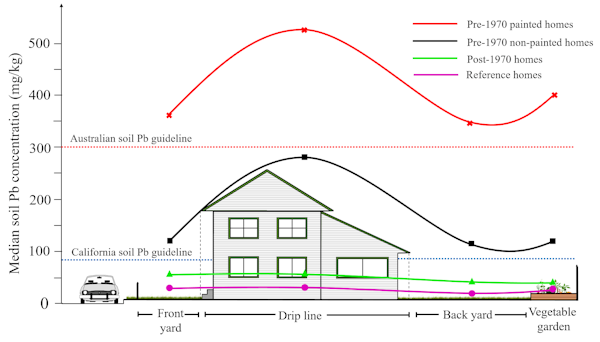The popularity of growing your own vegetables is at an all-time high here in Australia, providing families with the opportunity to enjoy tasty, fresh, and healthy produce while reducing their carbon footprint. But there's a hidden danger lurking in the soil: heavy metal contamination. Lead and other toxic substances can seep into home-grown fruits and vegetables, putting the health of families at risk. It's important to be aware of this potential hazard and take steps to ensure your home-grown produce is safe for consumption.
A legacy of lead
Lead, a toxic heavy metal, poses significant health risks, particularly to children and pregnant women. Exposure to even low levels of lead can result in cognitive impairment, developmental delays, and nervous system damage. There is no safe level of lead exposure. This dangerous metal can find its way into the soil and be absorbed by plants through a process called bioaccumulation.
Bioaccumulation is the process by which certain substances accumulate in the tissues of living organisms over time, potentially causing harm, and it occurs when organisms absorb and store certain substances, such as toxins or pollutants, in their bodies at a rate faster than they can eliminate them.
In Australia, sources of lead contamination include mining, refineries and industrial activities, and the historical use of lead-based paints. These particles have settled into the soil over time, leading to a lasting legacy of contamination. Australia was also one of the slowest of the OECD countries to phase out the use of leaded petrol, with the complete stop only coming in 2002. Due to our gradual method of elimination, and late complete stoppage, we have years more of lead production and pollution resting on our soil than the rest of the developed world.
From soil to plate
Studies have highlighted the presence of lead in home-grown vegetables, such as research conducted by Macquarie University, which found that “The Australian soil lead guideline of 300mg/kg for residential gardens was exceeded at 40% of Sydney homes, while concentrations of >1000mg/kg were identified at 15% of homes.”
It's important to recognize that the risks associated with consuming lead-contaminated vegetables are not limited to the immediate health effects. Long-term exposure to lead can result in chronic health conditions, such as kidney damage, hypertension, and anaemia. Moreover, lead contamination can have far-reaching consequences on ecosystems, as lead can be transferred from your soil to the plants grown there, and from there it can bioaccumulate into animals.
The consumption of lead-contaminated fruit or vegetables poses serious health risks, including potential developmental issues in children and long-term organ damage.

Cross-section schematic of a typical inner-Sydney residential home with median soil Pb (lead) concentrations for painted pre-1970 homes, non-painted pre-1970 homes, post-1970 homes and reference homes. The vegetable garden is displayed at the rear of the back yard, as this was the case for the majority of homes. Source: Rouillon et al. 2016
Garden safe, eat safe
Testing for lead and other toxic, heavy metals in your soil is essential in some areas if you plan on eating from your garden. There is a currently running and donation-supported program that is accepting Australian soil samples in exchange for providing you with information on what could potentially be contaminating your garden. If you plan on eating from your garden with in-ground planting you should definitely support the VegeSafe team with a donation and a sample of your soil. Testing for lead in soil and vegetables not only helps to identify contamination but also enables you to take informed action to protect your family's health.
Simple solutions
The most practical solution to minimize the risk of lead contamination in home-grown fruits and vegetables is to have a dedicated garden bed that you fill with quality soil that meets the relevant Australian standards. By providing a barrier between contaminated soil and your produce, raised beds allow you to control the quality of the soil in which your vegetables grow. Another advantage of using raised garden beds is that they can provide better drainage, reducing the risk of root rot and other soil-borne diseases. Furthermore, raised beds can make gardening more accessible for those with mobility limitations or back problems, as they require less bending and kneeling.
A growing conclusion
Growing your own fruits and vegetables is full of positives, and we don’t want to discourage anyone from giving it a go, but it is important to be aware of the potential risks of lead contamination. By being aware of our history of lead pollution and contamination you can be proactive and reduce the risk of lead affecting more Australians while continuing to enjoy the fruits of your labour. Further research and action must be taken to address this critical issue in Australia, and I want to encourage everyone to take an active role in supporting and participating in the wonderful citizen science program VegeSafe.

